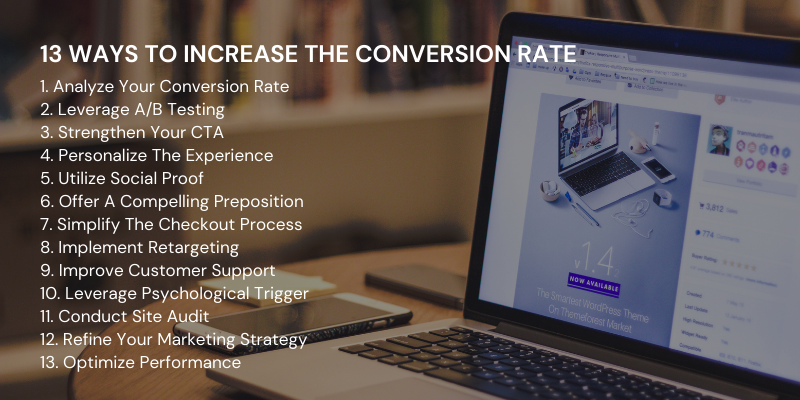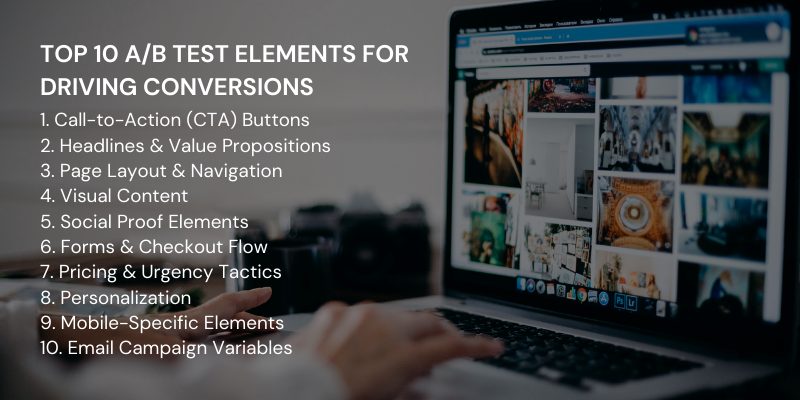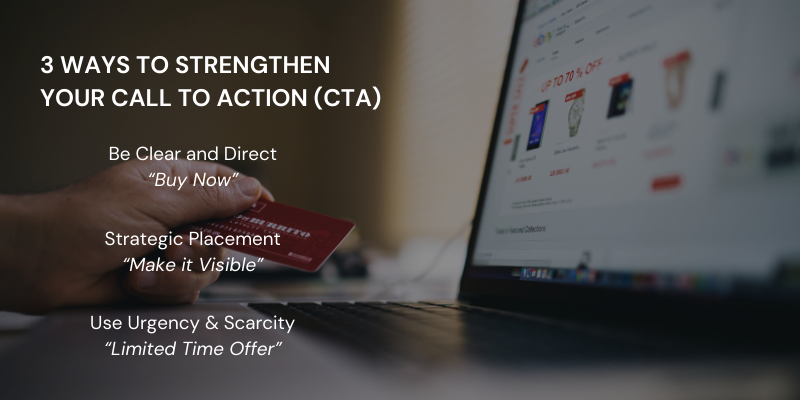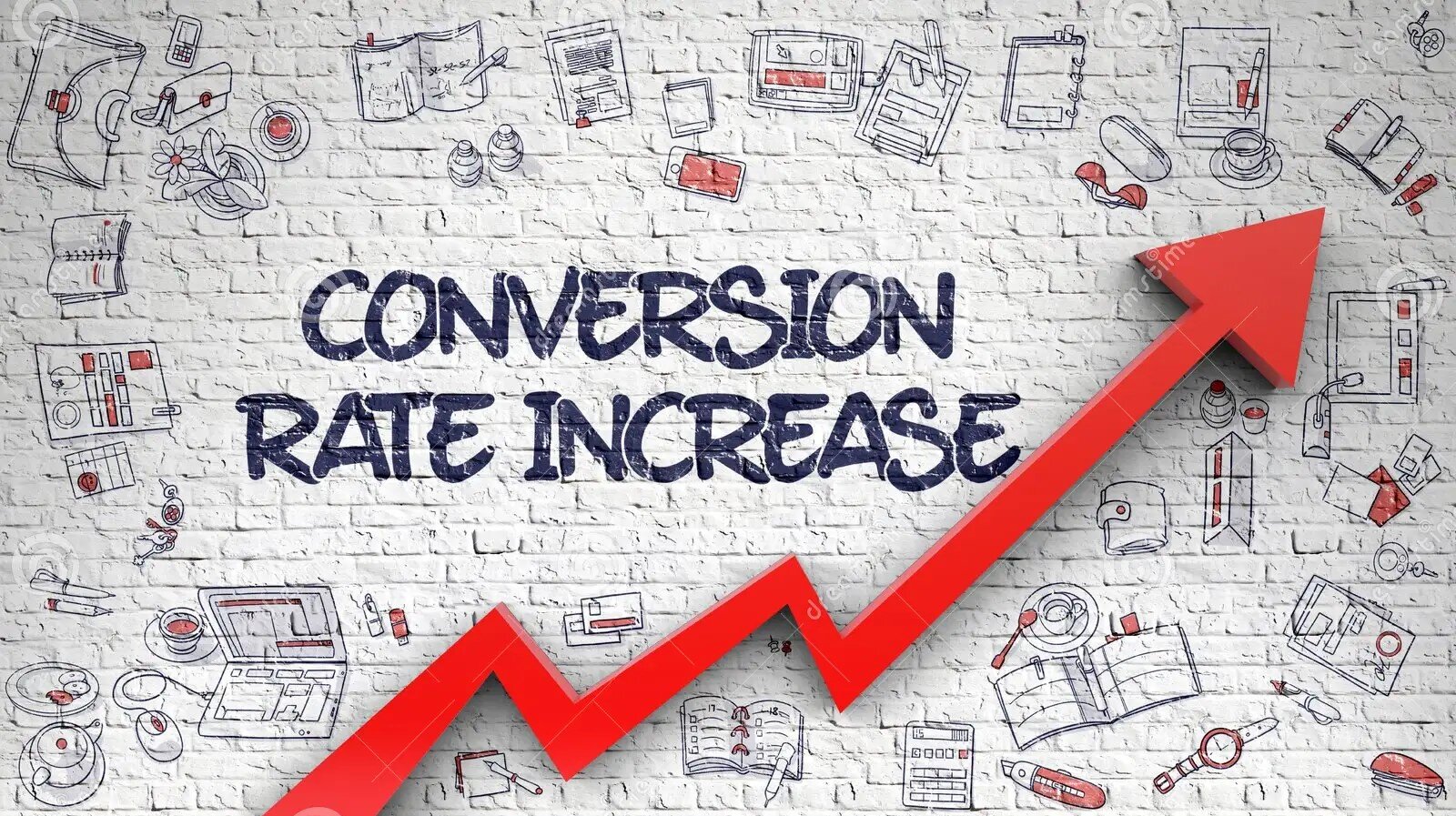Want to grow your business without spending more on ads?
The secret lies in improving your website’s conversion rate.
No matter if you run an online store, a service-based site, or a lead-generation platform, getting more visitors to take action means more sales, more sign-ups, and better results from the traffic you already have.
A “conversion” is simply the action you want someone to take, like buying a product, joining your email list, or filling out a contact form.
Therefore, by focusing on optimizing this one key metric, you’re not just getting more clicks, you’re turning those clicks into real business growth.
In this guide, we’ll walk through practical, proven strategies to increase your conversion rate, from understanding what’s working right now to making smart changes that drive measurable improvements.
Why Amplifying Your Conversion Rate Matters?
Here’s the simple truth: when your conversion rate goes up, so do your sales and new customers.
Even small improvements can turn an underperforming campaign into a strong revenue driver, all without spending an extra dollar on traffic.
For instance, what are five marketing strategies that retailers spend half of their annual budget on? These strategies often include paid ads like Google Ads, content marketing, social media campaigns, email marketing, and influencer partnerships. But the key to getting the most out of your existing marketing spend is focusing on conversion rate optimization.
Let’s put this into perspective with an example.
Suppose you’re investing $8,000 a month into a PPC campaign, paying $4 per click. That gives you 2,000 visitors to your landing page every month.
If your landing page converts at 3% (slightly under the average across many industries), here’s what that means:
- 2,000 clicks → 60 leads per month
- Cost per lead = $133.33
Not bad, but here’s where it gets interesting.
What if you improved that conversion rate to 6%? No extra ad spend. No more clicks. Just better performance from the same traffic.
- 2,000 clicks → 120 leads per month
- Cost per lead = $66.67
That’s double the leads and your cost per lead cut in half, all thanks to conversion optimization.
Top 13 Tactics to Increase the Conversion Rate
Now that you’ve seen how much impact a higher conversion rate can have, let’s dive into some practical strategies to help you get there.
These marketing tactics are designed to take your conversion efforts to the next level.

Here 13 major ways to increase the conversion rate
- Analyze your current conversion rate
- Leverage A/B Testing
- Strengthen Your Call To Action
- Personalize The Experience
- Utilize Social Proof and Trust Signals
- Offer A Compelling Prepositions
- Simplify the Checkout Process
- Implement Retargeting and Remarketing
- Improve Customer Support
- Leverage Pshcyological Trigger
- Conduct Regular Site Audit
- Refine Your Marketing Strategy
- Continuously Monitor and Optimize Performance
Let’s explore each.
1. Analyze Your Current Conversion Rate
Before you start optimizing, it’s essential to know where you stand.
Your current conversion rate acts as a benchmark, helping you measure the impact of future improvements and identify where changes are most needed.
Start by clarifying your goals.
Do you want more sign-ups, product purchases, or form submissions?
Defining the exact action you want visitors to take ensures you’re measuring the right outcomes.
Next, turn to analytics tools like Google Analytics.
These platforms give you a detailed view of how visitors interact with your site, what pages they spend the most time on, which elements they engage with, and where they tend to drop off.
Here are some key steps to follow:
- Identify Your Goals: Define the desired actions (sign-ups, purchases, etc.).
- Use Analytics Tools: Track conversion rates and user behavior with tools like Google Analytics.
- Look for Obstacles: Pinpoint areas where users abandon your site to prioritize improvements.
Once you have this foundation, you’ll gain valuable insights into what’s working and what isn’t.
This not only shows you where the biggest opportunities for growth lie but also makes every optimization effort more strategic and effective.
2. Leverage A/B Testing
AB testing is one of the most effective ways to boost your website’s conversion rate.
Thus, by comparing two versions of a page or element, you can see which one performs better, and use that data to guide smarter design and content decisions.
If you’re running ads, for example, advertisement examples of landing pages with different CTAs can show you which version leads to higher conversions.

Here are the top 10 A/B test elements for conversions:
- Call-to-Action (CTA) Buttons: Test text ("Buy Now" vs. "Get Started"), color (red vs. green), size, and placement.
- Headlines & Value Propositions: Experiment with benefit-driven vs. feature-focused messaging, length, and tone.
- Page Layout & Navigation: Test simplified menus (reducing items from 10→6), grid vs. list views, or removing navigation bars.
- Visual Content: Compare hero images vs. videos, lifestyle vs. studio product shots, or image sizes.
- Social Proof Elements: Optimize placement of reviews, testimonials, or trust badges.
- Forms & Checkout Flow: Test field reduction, guest checkout options, or multi-step forms.
- Pricing & Urgency Tactics: Experiment with free shipping thresholds, countdown timers ("Only 3 left!"), or bundle pricing.
- Personalization: Test dynamic product recommendations, location-based offers, or tailored search results.
- Mobile-Specific Elements: Optimize thumb-friendly CTAs, collapsible menus, or accelerated mobile pages (AMP).
- Email Campaign Variables: A/B test subject lines (emoji vs. no emoji), send times, or personalized content blocks.
When done consistently, A/B testing helps you make small, data-driven adjustments that add up to big gains in engagement and conversions.
3. Strengthen Your Call to Action (CTA)
Your Call to Action (CTA) is the heartbeat of your conversion strategy.
It’s the moment where interest turns into action, whether that’s buying a product, signing up for a newsletter, or requesting more details.

If your CTA is vague, hidden, or uninspiring, it can drag down your conversion rates no matter how good the rest of your page is.
- Be Clear and Direct: Tell users exactly what you want them to do. Action-oriented phrases like “Buy Now,” “Get Started,” or “Sign Up Today” make it easy for visitors to know the next step.
- Strategic Placement: Where you put your CTA matters just as much as how you phrase it. Keep it visible above the fold and repeat it toward the end of your content as a reminder.
- Use Urgency and Scarcity: Create momentum with urgency. Phrases like “Limited Time Offer” or “Only a Few Left” encourage visitors to act now rather than later.
A strong CTA doesn’t just guide your visitors, it motivates them. Think of it as the final nudge that turns attention into real action.
4. Personalize the Experience
Personalization is a game-changer when it comes to conversions.
When visitors feel recognized and understood, they’re far more likely to take action. For example, if you want to know how to get into digital marketing, you could explore various methods like utilizing personalized campaigns based on user behavior or interests.
Therefore, by tailoring your content, offers, and recommendations to match each person’s preferences and behavior, you create an experience that feels both relevant and engaging.
- Behavioral Targeting: Use data from past interactions, like browsing history, clicks, or purchases to suggest products or content that align with a user’s interests.
- Dynamic Content: Customize messages, offers, or even entire sections of your site for returning visitors or leads, making every interaction feel more personal.
The result? A website that feels less like a generic sales pitch and more like a one-on-one conversation.
This not only increases engagement but also builds trust and loyalty, key ingredients for long-term conversions.
5. Utilize Social Proof and Trust Signals
Shoppers trust other shoppers.
In fact, nearly half of consumers say they trust customer reviews as much as a personal recommendation from a friend.
That means a simple review or testimonial can be the deciding factor for someone who’s on the fence or the reassurance a first-time buyer needs before clicking “buy.”
Here are a few powerful ways to showcase reviews on your site:
- Product-Specific Reviews: Display reviews directly on each product page, making sure they relate to the exact item a visitor is considering.
- Video Testimonials: Encourage customers to share short video reviews. They feel authentic, build credibility, and pack a bigger emotional punch.
- Dedicated Reviews Page: Go a step further by creating a page that collects all your testimonials in one place, perfect for visitors who want extra proof before making a decision.
If you are using platforms like Shopify, you may wonder, is Shopify legit? Rest assured, Shopify has gained a solid reputation for being a trusted platform for eCommerce businesses to thrive. By adding authentic voices from your customers, you not only build trust but also make your brand feel more approachable and credible.
6. Offer a Compelling Value Proposition
Your value proposition is the reason customers should choose you over the competition, so make it crystal clear.
Highlight the unique benefits that solve your audience’s pain points, whether it’s superior quality, standout features, or exceptional service.
Consider also integrating what is CTA? to ensure your message clearly communicates what action customers should take next.

Then, sweeten the deal with irresistible offers like limited-time discounts, free trials, or exclusive bonuses.
When your value is undeniable and the offer feels too good to pass up, conversions naturally follow.
7. Simplify the Checkout Process
A complicated checkout is one of the biggest conversion killers in eCommerce.
The smoother the process, the more sales you’ll close. Here’s how:
- Minimize Form Fields: Only ask for essential details to keep things quick and easy.
- Enable Guest Checkout: Let customers buy without forcing account creation.
- Show Transparent Pricing: Reveal total costs upfront, shipping, taxes, and fees, to avoid unpleasant surprises.
If you’re wondering how does Shopify work and whether it offers a seamless checkout experience, rest assured, Shopify has features that streamline the checkout process, reducing friction for your customers.
By removing friction and making checkout seamless, you’ll reduce cart abandonment and boost conversions.
8. Implement Retargeting and Remarketing
Not every visitor buys or signs up on their first visit, but that doesn’t mean they’re lost.
Retargeting and remarketing help bring them back and give you a second chance at conversion.
This method is often supported by using best SEO reporting tools to track visitor behavior and display personalized ads.
Use remarketing ads to re-engage people who abandoned their carts or browsed products without purchasing, keeping your brand top of mind until they’re ready to buy.
For lead-gen sites, follow up with email reminders to users who started but didn’t complete a form. A personalized nudge is often all it takes to turn hesitation into action.
Explore Our Digital Marketing Services!
9. Improve Customer Support Systems
Strong customer support can directly boost conversions by removing doubts and building trust.
Many visitors hesitate to purchase or sign up when they have questions, but immediate and reliable support makes the path to conversion much smoother.
- Live Chat: Offer real-time assistance to answer questions instantly, recommend products, or resolve issues. It reassures visitors and shows your business is responsive. For businesses providing B2B marketing services, implementing live chat can be especially effective in handling corporate client inquiries, ensuring fast and helpful responses.
- Comprehensive FAQ: Create a detailed, well-organized FAQ section to address common concerns upfront, reduce friction, and let users find solutions quickly without needing to contact support.
By combining live chat with a solid FAQ page, you eliminate barriers, improve user confidence, and increase the likelihood of conversion.
10. Leverage Psychological Triggers
Human psychology plays a huge role in decision-making, and knowing how to use these triggers can give your conversion rates a serious boost.
By tapping into behavioral patterns, you can guide visitors to take action more naturally and confidently.
- Reciprocity (How to use it): People tend to return favors. Offer something of value upfront, like a free ebook, discount code, or trial.
- Social Proof (How to use it): Most people look to others before making decisions. Showcase reviews, testimonials, case studies, or even customer counts (“Trusted by 10,000+ users”).
For example, businesses offering email marketing services can incorporate reviews and testimonials from satisfied clients, which will help build trust and encourage potential customers to take action. By intentionally weaving these psychological triggers into your site experience, you make it easier for visitors to trust your brand, engage more deeply, and ultimately convert.
11. Conduct Regular Site Audits
Regular site audits are crucial for spotting and fixing issues that may be holding back your conversions.
Thus, by reviewing your site systematically, you can identify problems that hurt user experience, lower engagement, and ultimately cost you sales or leads.
- Technical SEO Audit (How to do it): Use tools like Google Search Console, Screaming Frog, or SEMrush to scan your site for broken links, slow-loading pages, mobile responsiveness issues, and improper redirects. If you’re offering eCommerce development services, ensure that your site is optimized for a seamless shopping experience with fast load times and proper functionality.
- Content Audit (How to do it): Go through your key pages and ask: Is this content clear, relevant, and persuasive? Update outdated information, strengthen weak CTAs, and ensure the content flows logically toward conversion. Additionally, businesses providing web app development services should audit their site to ensure that apps function well across all platforms and devices.
By making audits a regular habit, monthly or quarterly, you’ll catch small issues before they become big problems, keeping your site smooth, trustworthy, and optimized for higher conversions.
Get Your Free SEO Audit Report Today!
12. Refine Your Marketing Strategy
A strong marketing strategy is the backbone of higher conversions. Even the best website can’t perform if the traffic it gets isn’t relevant or engaged.
Thus, by aligning your marketing efforts with your conversion goals, you’ll attract the right audience and maximize ROI.
One common question people ask is, what is network marketing, but in this case, for online businesses, leveraging B2B vs B2C strategies will help in refining your marketing outreach.
Whether you’re targeting businesses (B2B) or consumers (B2C), the right strategy will guide you to better conversions.
Leverage targeted ads that use behavioral, demographic, and interest-based data to connect with people most likely to convert.
These high-quality visitors already have intent, which makes it easier to move them toward action.
Pair this with a smart content marketing approach, blogs, videos, guides, and case studies that educate and solve real problems. Not only does this build trust, but it also gently nudges users closer to making a decision.
When you consistently refine your marketing strategy, you ensure that the right people get the right message at exactly the right time, leading to stronger engagement, deeper trust, and ultimately, more conversions.
13. Continuously Monitor and Optimize Performance
Conversion rate optimization is not a one-time effort, it’s an ongoing process that requires constant monitoring, analysis, and refinement.
To achieve sustained improvements in conversions, it’s crucial to track how users interact with your website, identify obstacles, and implement data-driven changes.
- Track Key Metrics: Keep a close eye on important performance indicators such as conversion rate, bounce rate, exit rate, average session duration, and click-through rates.
- Leverage Analytics Tools: Tools like Google Analytics, heat maps, and session recording software can reveal exactly how users navigate your site.
- Adjust Based on Insights: Use the data gathered to make informed adjustments. This could include redesigning elements that cause friction, rewriting confusing copy, improving CTA placement, or simplifying forms.
By continuously monitoring performance and optimizing based on actionable insights, you create a cycle of improvement that steadily enhances user experience and drives higher conversion rates.
Conclusion
So, boosting your conversion rate? It's not just one magic trick.
It's about bringing together everything, how your site feels to use (user experience), how it looks (design), understanding what makes people tick (psychology), and smart marketing moves.
Think about it: every little piece matters. That clear 'Buy Now' button? The content that feels like it's just for them?
Those trust badges and reviews? Even those ads reminding people they left something in their cart? All of that is working together to gently nudge visitors towards actually doing something.
The key is you've got to keep tweaking and improving these things.
It makes the whole journey smoother and more interesting for your users, which means they're way more likely to convert.
And here's the big thing: conversion rate optimization is never really 'done'. It's always a work in progress.
You gotta keep testing stuff, looking at the numbers, and making small changes. Why? Because people change, trends shift, and your own goals evolve.
Staying on top of this, watching how things perform, really listening to what your visitors need, and letting the data guide your tweaks, doesn't just bump up your immediate sales. It builds real, lasting trust and loyalty.
Bottom line? Taking this smart, thoughtful approach to CRO turns those casual browsers into your biggest fans. It’s how you drive real results and build a business that lasts.









